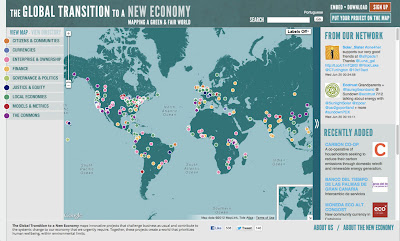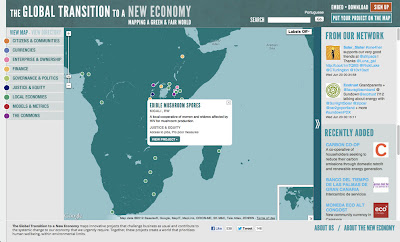learn about google, learn how to be online, learn how to make money online, learn about google's Products and all it's updates
Friday, June 22, 2012
Lower pricing and simplified limits with the Google Maps API
Changes to pricing. While the Maps API remains free for the vast majority of sites, some developers were worried about the potential costs. In response, we have lowered the online price from US $4 per 1,000 map loads to 50¢ per 1,000 map loads.
Simplified limits. We’re eliminating the previous distinction between Styled Maps and regular unstyled maps. The same usage limits and pricing now apply to applications using Styled Maps and the default Google Maps style.
Based on questions we’ve heard during regular conversations with developers, we’d also like to remind you of the following facts.
To monitor whether your site might be affected by the Maps API usage limits, use a Google APIs Console key with your applications. Daily usage reports will then be generated in the console.
If you are a high-trafficked site, please consider Google Maps API for Business, our enterprise offering with technical support, a service level agreement, and additional benefits.
Non-profit organisations aren’t affected by the Maps API usage limits and can also apply for a free Maps API for Business license through the Google Earth Outreach grants program.
You can generate revenue from your Maps API application using AdSense for Maps, which enables you to display relevant ads on or alongside your map.
Posted by Thor Mitchell, Product Manager, Google Maps API
Google@ Cannes: Project Re: Brief Premiere, the Google+ "Winners Circle" and More
- Project Re: Brief, the film: Earlier this year, we kicked off Project Re: Brief, our new experiment to re-imagine the future of advertising by taking some cues from its storied past. We’ve brought four of the most loved campaigns of the ‘60s and ‘70s -- Coca-Cola’s “Hilltop,” Volvo’s “Drive it like you hate it,” Avis’ “We try harder,” and Alka-Seltzer’s “I can’t believe I ate the whole thing” -- back to life, this time built from the ground up for the digital age, with the partnership of the the advertising legends that originated them. But we think the ads themselves are only part of the story. Behind the scenes of our “Project,” we saw an amazing journey unfold as traditional, classically trained advertising creatives came together with technologists for the first time to collectively push the bounds of what online advertising can be. This journey is captured in “Project Re: Brief: A Film About Re-Imagining Advertising,” which we premiered at Cannes, and made widely available today on YouTube.
- The Google+ Winners Circle: In the same spirit of helping share inspiration from some of the world’s best advertising creatives, we're also creating the Google+ “Winners Circle.” This will be a new circle of 50 of the industry’s most honored creatives so that everyone in the industry can meet the people behind the amazing work we’re here to celebrate and see what makes them tick.
- Agency Edge, our refreshed training platform for agencies: One of the top requests we get from our agency partners is for more tips and training to help get the most out of the web’s myriad of marketing tools. We initially addressed this several years ago with the launch of AgencyLand, an educational platform designed specifically for our agency partners. But in the years since, the agency landscape, the range of tools available and in fact, the entire ecosystem, have shifted dramatically. So to meet the new and quickly evolving needs of today’s agencies, we unveiled Agency Edge, a place where agencies can get on-demand training, collateral and benchmark data to better serve their clients.
Cannes is one of my favorite events of the year, precisely because of the amazing mix of innovation and creativity on display. We think, though, that even more dazzling projects lay just over the horizon. Through initiatives like these, we hope to help bring them into view.
Posted by Torrence Boone, Managing Director, Agency Business Development
Thursday, June 21, 2012
Show a Custom Image When No AdMob Ad Is Available: Part 2
We previously discussed how to show a custom image using the Google AdMob SDK when an ad request can’t be filled. In the second and final part of this series, we’ll explain how to resume showing AdMob ads if, for example, internet connectivity is restored.
In part 1, we demonstrated how to hide the ad and display a custom image when the first ad request fails. However, the AdMob SDK doesn't make another ad request until it successfully receives an ad, so you must schedule your own refresh. Here’s how to do it:
private final Handler refreshHandler = new Handler();
private final Runnable refreshRunnable = new RefreshRunnable();
private boolean firstAdReceived = false;
@Override
public void onFailedToReceiveAd(Ad ad, ErrorCode code) {
if (!firstAdReceived) {
// Keep code from part 1.
...
// Schedule an ad refresh.
refreshHandler.removeCallbacks(refreshRunnable);
refreshHandler.postDelayed(
refreshRunnable, REFRESH_RATE_IN_SECONDS * 1000);
}
}
private class RefreshRunnable implements Runnable {
@Override
public void run() {
// Load an ad with an ad request.
adView.loadAd(new AdRequest());
}
}
A Handler is used to schedule an ad refresh at your desired refresh rate. Before making the postDelayed call, the handler removes any pending posts that may be queued.
With these changes, your application will request an AdMob ad at a regular interval. Once a request is successful, the existing code in onReceiveAd swaps out your custom image with an AdMob ad, and AdMob starts refreshing automatically.
If the user either leaves your app or clicks on your custom ad, you want to pause your refresh handler when your app is not visible to the user. This is an Android best practice that will help preserve battery life. You can override Android’s onStop and onStart callbacks to stop and start ad refreshes, as shown below:
@Override
public void onStop() {
super.onStop();
// Remove any pending ad refreshes.
refreshHandler.removeCallbacks(refreshRunnable);
}
@Override
public void onStart() {
super.onStart();
if (!firstAdReceived) {
// Request a new ad immediately.
refreshHandler.post(refreshRunnable);
}
}
This code prevents your app from making ad requests when the user exits your app but immediately requests an ad when the user returns to your app.
That’s it! You’ve successfully integrated a placeholder image into your application to stand in when an ad request can’t be filled. Check out the full example if you have trouble setting up the code.
As always, let us know on the forum if you have any questions about the Google AdMob SDK, or join us during office hours.
![]() - Eric Leichtenschlag, AdMob Team
- Eric Leichtenschlag, AdMob Team
Wednesday, June 20, 2012
Map of the Week: The Global Transition to a New Economy
Why we like it: This map is a great way to discover NGO projects from all over the world. The info-graphic style of the site is a well designed way to catalog a large amount of information, that’s easy to access and understand. Additionally, by using Styled Maps to simplify the color scheme of the map, the color coded markers really pop out.
In the run-up to this year’s United Nations’ Conference on Sustainable Development 2012 (Rio+20), the New Economics Institute launched the Global Transition to a New Economy. As described by the organization, “The Global Transition to a New Economy maps innovative projects that challenge business as usual ... Together, these projects create a world that prioritizes human well being, within environmental limits.”

Promoting activism on a global scale is a very complex task. This map aims to make things easier by cataloging the efforts of many different NGOs on and around the map.
The map employs several design elements to create a very focused message. For example, the color of the map fits in well with the branding of the site and there’s even the ability to turn political labels on or off, which is a creative way of using styled maps to show that the problems we face in future are not exclusive to any boundary.

It’s great to see another example of the Google Maps API being used to promote good causes in the world. We hope visitors will use this map to discover great organizations around the world and help solve the environmental and economic problems we face.
Posted by Carlos Cuesta, Google Maps API Product Marketing Manager
Tuesday, June 19, 2012
Join us at IAB Marketplace: Advertising Technology this Thursday in NYC
On Thursday, Jun 21, 2012, IAB is hosting its Advertising Technology Marketplace at the Crowne Plaza Times Square in New York City, and DoubleClick will be there! This event looks to address the developments, opportunities, and impact of technology on the digital media ecosystem, and we have a number of Google leaders contributing to both the advertiser and publisher sides of the conversation. We look forward to seeing you at the event--in particular the sessions we are leading below!
Building Brands with Programmatic Buying: A Case Study with Kellogg’s
9:30 am, Mainstage
Presented by:
Chip Scovic, Head of Sales, Strategic Partner Management for Google
Bob Arnold, Associate Director, Global Digital Strategy, Kellogg’s Company
Demand-side platforms are transforming how digital media is bought and sold, bringing new levels of precision and reach to digital marketing campaigns. And although the technology is still largely relegated to the realm of "direct response," this is quickly changing. RTB is poised to transform not just performance-oriented campaigns, but also brand-building efforts, as marketers are turning to the technology for the advantages it offers. The ability to reach a precise audience, in real time, and increasingly through engaging new formats, metrics and inventory are all trends that are promising new opportunities for marketers. In this session, Google's Chip Scovic partners with Jon Suarez-Davis from Kellogg's to take us through ways in which advertisers are beginning to blend art and science to build their brands online.
The Next Generation Ad Buying Platform
10:25 am and 11:05 am, room 406
Presented by: Stephen Yap, Head of Emerging Products & Markets, Google
In these sessions DoubleClick seeks to answer the question: What is the next generation ad platform? From ad serving and creative, to ad buying and reporting. From mobile and video to search and social. With a clear vision of the future, we will explore the functionality and performance required to advance the industry and meet the evolving needs of digital marketers.
The Publisher Opportunity: Devices & Ad Formats
10:05 am and 10:45 am, room 406
Presented by:
Shane Peros, Managing Director, Americas Sales, Google
Bill Murray, Vice President, Digital Advertising Operations at The Weather Channel
In these sessions, Shane Peros, Managing Director for Strategic Publisher Partnerships at Google will be joined by a top-tier publisher to discuss cross-format opportunities in mobile, video, rich media and the operational efficiencies and benefits of using the DoubleClick suite of products.
Posted by Emily Wright, Product Marketing Manager
Preferred Deals: A New Way to Sell in the Ad Exchange
Preferred Deals are best suited for publishers who usually sell their inventory anonymously and are looking to connect with buyers in a discrete way. The buyers benefit by getting access to inventory they can’t find elsewhere. This interface provides a streamlined process for soliciting and negotiating Preferred Deals, giving you and your demand partners a more efficient alternative to phone calls and emails.
Making Preferred Deals work requires that you and your buyers compromise to find areas of mutual benefit. Though Preferred Deals is currently in closed beta, we’re hosting two joint publisher/buyer webinars to help you understand how they work. Register for the time that works best for you below.
North American Webinar
Friday, June 22nd at 11am PDT (1pm CDT, 2pm EDT)
Register HERE
EMEA Webinar
Friday, June 22nd at 3pm GMT (7am PDT, 10am EDT)
Register HERE
Posted by Drew Bradstock, Product Manager








